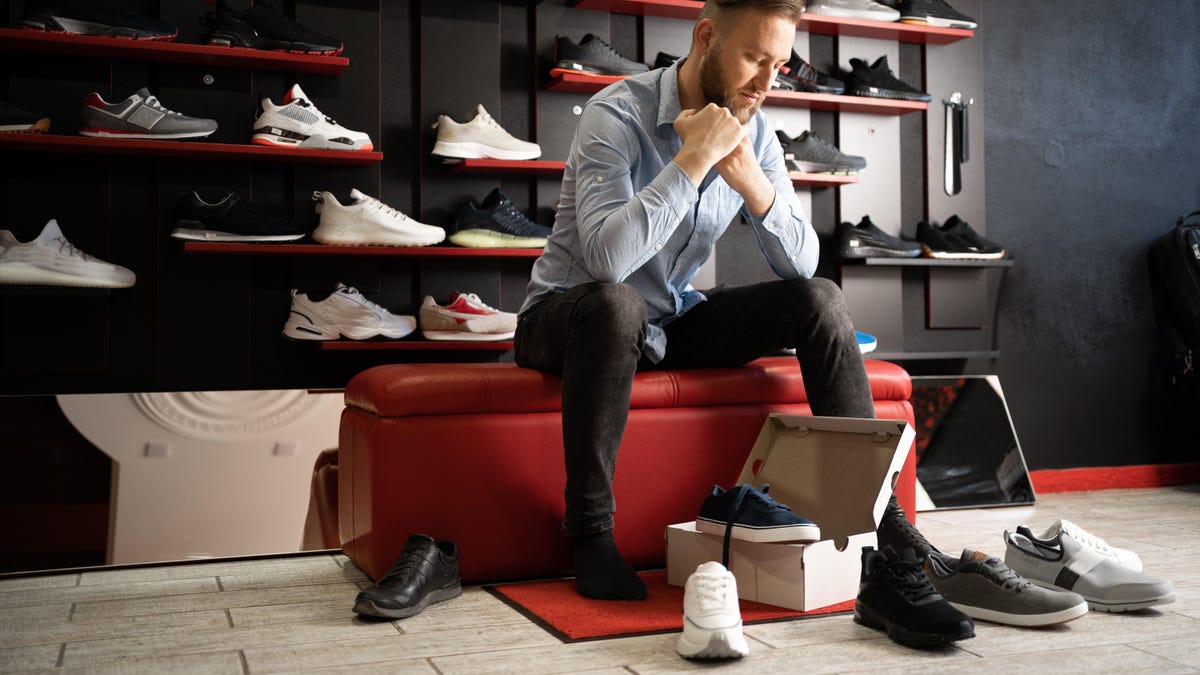
Shoe lore, of dubious provenance, is rampant in running communities. You need to get fitted for the right shoe for your feet, one school of thought goes. (This requires an evaluation at your local running store.) Another idea is that you either need to wear minimalist shoes, or that you should never wear minimalist shoes. Yet another holds that if you have any aches, pains, or injuries, your shoes are likely the culprit. But none of these ideas have any solid scientific backing. Do our shoes really determine our injury risk? A new Cochrane review asked that question, and got a big ol’ shrug.
The review looked at studies that compared different types of shoes. To define a few terms: motion-control shoes aim to correct the tendency for feet to roll inward too much (“overpronate”). Stability shoes are similar, aiming to reduce that motion somewhat. Neutral shoes don’t try to change the motion of your foot strike in any particular direction. Cushioned shoes are neutral shoes with extra cushioning. Minimalist shoes have very little cushioning, aiming to be a covering for the feet that doesn’t interfere with motion. And then there are shoes with harder and softer midsoles. Each type of shoe has its proponents who say that choosing the right shoe will reduce your chances of injury.
If shoes were as important for injury prevention as we’ve been led to think, the review should have found that injury rates track with shoe choice. But instead, the meta-analysis of 12 studies involving more than 11,000 participants found nothing really actionable. Among the findings:
- Do neutral/cushioned shoes result in more or fewer injuries than minimalist shoes? The choice of shoe “may make little or no difference,” the authors write, and there isn’t even a clear agreement on which style runners prefer more. (In one study, people were more satisfied with the minimalist shoes; in another, it was the reverse.)
- Do motion-control shoes result in more or fewer injuries than neutral/cushioned shoes? “It is uncertain…because the quality of the evidence has been assessed as very low certainty.” In other words, the studies don’t give a clear answer.
- Do shoes with a soft midsole result in more or fewer injuries than those with a hard midsole? “Soft midsole shoes may make little or no difference to the number of runners sustaining a lower limb running injury when compared with hard midsole shoes.”
- Do stability shoes result in more or fewer injuries than neutral/cushioned shoes? “It is uncertain whether or not stability shoes reduce the number of runners sustaining a lower limb running injury when compared with neutral/cushioned shoes.”
- Do stability shoes result in more or fewer injuries than motion-control shoes? “It is uncertain whether or not motion control shoes reduce the number of runners sustaining a lower limb running injury when compared with stability shoes.”
- And finally, the big question: Does prescribing shoes based on foot type reduce injury? “There was no evidence that running shoes prescribed based on static foot posture reduced the number of injuries compared with those who received a shoe not prescribed based on foot posture in military recruits.”
Cochrane reviews are highly regarded as being able to settle questions like these to the best of science’s current ability. And this one, with all its data points, was not able to conclude that any category of shoe reduces injury compared to others. What’s more, they found that there’s no evidence that you can reduce injury by finding the right shoe for you.
The results come with a big grain of salt. Reviews are only as good as the studies they’re reviewing. As the authors note, many of the studies available to them were of “low certainty.” So it’s possible that one shoe type is better than another, but if so, the difference isn’t significant enough to show up in the results.
One exception is the part about prescribing shoes based on foot type. That one is on more solid footing, with what they call “moderate certainty” evidence. In other words, this supports the idea that you probably don’t need to get your feet evaluated by a professional just to know which shoes to buy.
So what running shoes should I buy?
Of all the hypotheses that went into this study, the only one that really escapes unscathed is the idea that you should run in whatever shoes feel good. We’ve been saying the same thing here at Lifehacker for nearly a decade, and that’s also what you’ll hear from a lot of good running coaches.
That doesn’t mean it’s impossible that shoe choice affects injury risk. It’s possible that better-designed studies would have been able to pick up subtle differences between types of shoes as assigned to different categories of runners.
Ultimately, I’d say that if you’re happy with your shoes, there’s no need to change anything. But I’d also like for everyone to please stop telling new runners that they need to get their feet wet and check their footprints to see what type of foot they have. I would doubly like people to stop blaming shoes for running injuries without also considering other factors that can lead to injury. For example, the amount of running you do, the type and intensity of running that you do, and other factors like whether you strength train probably have more to do with injury risk than your choice of shoes.
I’ve written before about the issues I had with running shoes when I first started, and how I spent years as an on-and-off runner with unexplained foot pains, despite buying a pricey pair of motion-control shoes that I was led to believe I needed. In the end, what worked was trusting my gut and going back to the same style of shoe I’d previously been talked out of because it supposedly wasn’t supportive enough. (I ended up running a pain-free marathon in that type of shoe.)
In many areas of fitness, people make a big deal about details that don’t matter that much in the long run. Shoe companies need to convince you that their new shoe is better than whatever you’re wearing now. Running stores and running publications need to convince you that you need their expertise. But you can also just try some shoes on and see what you like, and go with those, guilt-free.
Credit: Source link



